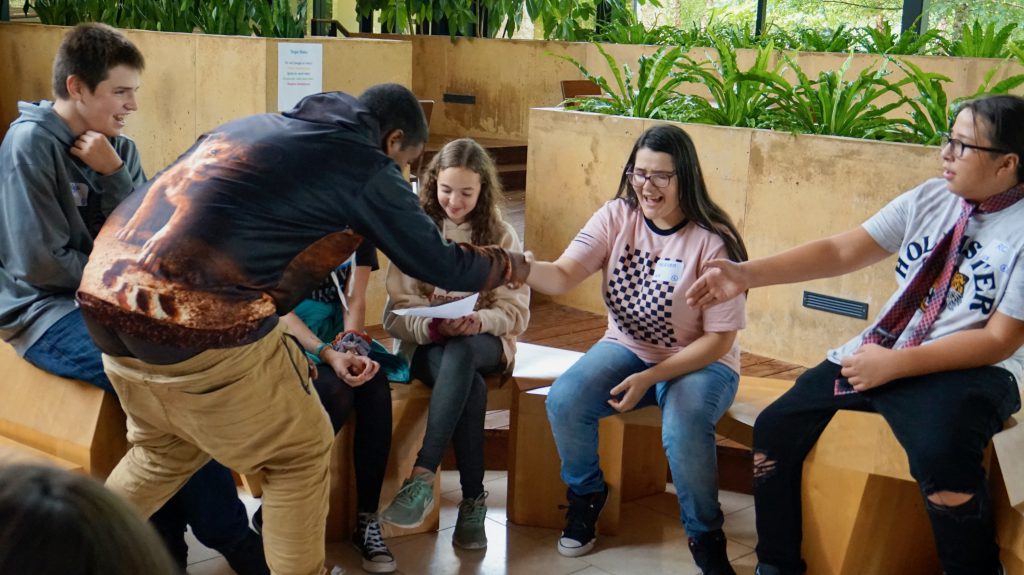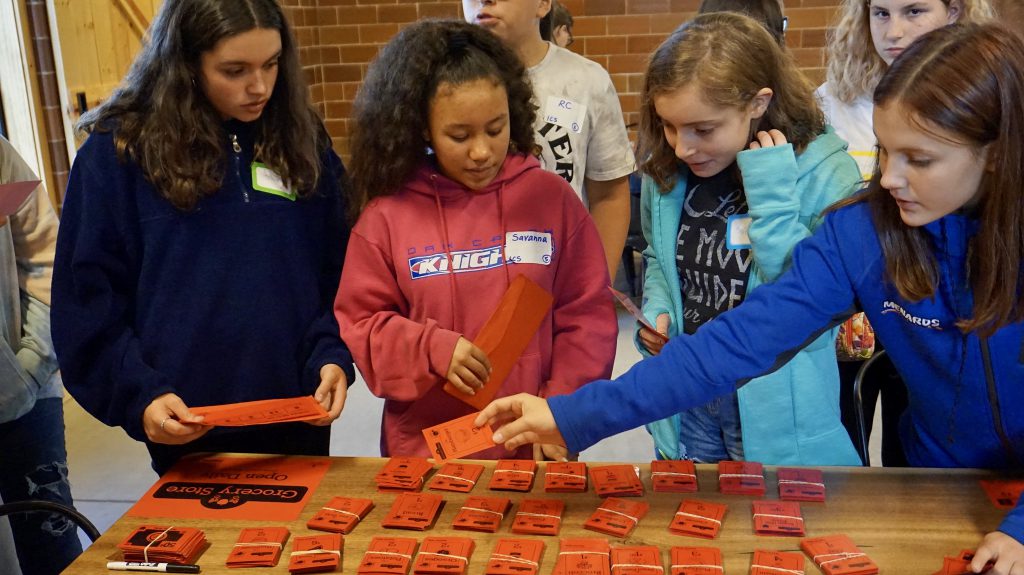A Cultural Exchange by Local Schools
Student exchanges between predominantly Jewish, Latinx, black and Native American schools growing.

Eighth graders from the Indian Community School and the Milwaukee Jewish Day School participate in an exercise that raises awareness of how different cultures’ social rules affect relationships between different ethnic, racial and religious groups. Photo by Andrea Waxman/NNS.
When students graduate from the Indian Community School, located on a wooded campus in Franklin, they leave a close-knit environment, where Native cultures, languages and values are woven into their education. They spread out to high schools across the Milwaukee area, where they are thrown into contact with students from different cultural, racial, ethnic and religious backgrounds.
Last year, through a program called Repairing Together, the classmates learned about the lives of Jewish, Latinx and African American students.
Jason Dropik, the head of the Indian Community School, believes the program will help his K-8 graduates make friends and more easily navigate the transition to high school and beyond.
Repairing Together was launched by founder Elsien Crawford at the beginning of the 2016 school year. Eighth graders from Milwaukee College Prep’s 38th Street campus, where most students are African American, and seventh and eighth graders from the Milwaukee Jewish Day School were the first to participate. Repairing Together is now a program of the Milwaukee Jewish Day School.
The program brings students from different backgrounds and neighborhoods together to work on service-learning activities. The goal is to give them opportunities to share their own experiences and to provide a forum for understanding one another’s world views.
Crawford, a native of the Netherlands, moved to Milwaukee after marrying a local man. She is multilingual and grew up valuing her experience with diverse friends she met at school and while traveling.
Starting with the youngest

Native American and Jewish eighth graders learn about free and low-cost sources for groceries and practice combining them to feed a family living on a low-income budget. The exercise was part of a service-learning project at the Hunger Task Force Farm in Franklin. Photo by Andrea Waxman/NNS.
Starting with 80 eighth graders, she used professionally prepared evaluation tools to measure shifts in attitude and empathy and discovered the biggest impact showed up among the youngest students.
The following year, Bruce Guadalupe Community School, whose students are mostly Latinx, joined the program, and it expanded to more grades.
By the end of this school year, Crawford expects more than 1,500 will have participated.
Her goal is to start with K4 students at all four schools and take them through eighth grade so that they will have spent 10 years together by the time they enter high school.
Organizations that have participated include the Victory Garden Initiative, Serve 2 Unite, Urban Ecology Center and Arts @ Large.
On a recent morning, Native American and Jewish eighth graders gathered at the Indian Community School. In small groups, they rotated between activities — a food justice activity at the nearby Hunger Task Force Farm, an exercise on how different social rules in different cultures affect people’s interactions and a third in which students used art to talk about the top issues on their minds.
Mark Denning, a lacrosse coach and professional educator, led the art project. Together students painted images that represented their concerns on an 8-foot fiberglass polar bear. Some of the images were joyful and others worrying, Denning said. They included allusions to bullying, the impact of cancer among family members and the importance students placed on love.
“We can get into some serious conversations by using art rather than sitting in a circle and saying ‘please share your deepest concern,’” Denning said.
In a game led by diversity educator Reggie Jackson, another group of eighth graders separated into the Rebas and the Amblers, two fictitious cultural groups with different social behaviors.
The exercise concluded by asking participants to consider how their interactions made them feel, how diversity can create communication barriers and how they might overcome these barriers and communicate effectively.
Nicole Becker, a third grade teacher at Milwaukee College Prep, whose class participated with students from the Milwaukee Jewish Day School and Bruce Guadalupe Community School last year, said the students were shy at first.
“They didn’t know quite what to do, but through prompting and questions and different experiences, they were able to relate to each other.”
This story was originally published by Milwaukee Neighborhood News Service, where you can find other stories reporting on fifteen city neighborhoods in Milwaukee.
If you think stories like this are important, become a member of Urban Milwaukee and help support real, independent journalism. Plus you get some cool added benefits.




















Wouldn’t it be nice if the kids lived in neighborhoods where it would be natural to be around and play with children of different ethnicities and races? Integrated neighborhoods? Or if they went to school together, rather than segregated schools? No one would have to make special arrangements for them to get to know each other.